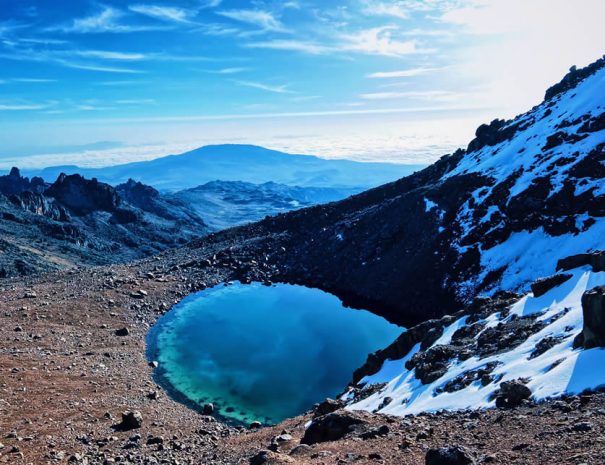
 Glaciers in Mt Kenya/KESHI TOURS
Glaciers in Mt Kenya/KESHI TOURSScientists are warning that glaciers in East Africa are melting fast, putting over two million people at risk of losing their water supply.
Glaciers are large masses of ice that form over an extended period due to the accumulation and compaction of snow.
Together with ice sheets, glaciers store about 70 per cent of the global freshwater resources.
High mountain regions are the world’s water towers.
More than 275,000 glaciers worldwide cover approximately 700,000 km².
The 2024 hydrological year marked the third year in a row in which all 19 glacier regions experienced a net mass loss.
Glacier mass loss was 450 billion tons in the 2024 hydrological year – the fourth most negative year on record.
Depletion of glaciers threatens water supply to hundreds of millions of people who live downstream and depend on the release of water stored over past winters during the hottest and driest parts of the year.
In the short-term, the melting of glaciers increases natural hazards like floods.
In Kenya and Tanzania, communities rely on water from Mount Kilimanjaro and Mount Kenya.
However, as glaciers shrink, rivers like the Ngare Ndare have lost 30 per cent of their water in the last decade, leading to more conflicts among farmers and herders.
On average in the tropics, glaciers shrunk 20 per cent between 2000 and 2023 - but the situation in East Africa is far worse.
Mount Kilimanjaro has the largest area of glaciers remaining in East Africa at just under one kilometer square.
But compared to 1900, Mount Kilimanjaro has lost more than 90 per cent of its original glacial area.
Mt Kenya, has the smallest remaining amount of glacier area in East Africa at just 0.069 kilometer square- a 95 per cent loss of area since 1900.
The mountain’s glaciers have more than halved since just 2016.
The Nothey and Darwin glaciers on Mount Kenya have already disappeared and the Lewis Glacier - which split in two between 2014 and 2016 - has shrunk 62 per cent in just five years.
Mount Kilimanjaro’s glaciers are nearly 12,000 years old, but they will disappear within our lifetimes.
Scientists predict that the remaining glaciers on Mount Kilimanjaro are likely to disappear by 2040 and on Mount Kenya by 2030, making them among the first mountain ranges worldwide to lose all their glaciers due to climate change.
The melting of the ice on Mount Kilimanjaro and Mount Kenya is already hurting local communities, and it will only get worse.
Studies have found out that 66 per cent of people along the Naromoru river agreed that the melting of Mount Kenya’s glaciers had reduced the river flow downstream.
Older people were most likely to have seen these changes.
Water from glaciers and snowfall contribute greatly to the river.
As it takes about 50 years for groundwater to emerge at the foot of Mount Kenya, after entering the rock at the glacial area, we may not yet have seen the full effects of the deglaciation.
A new report on the State of Climate 2024 from the World Meteorological Organization (WMO) shows that between 2022 and 2024, glaciers worldwide lost more ice than ever recorded.
The report shows that five of the past six years have witnessed the most rapid glacier retreat on record.
Already, WMO and the World Glacier Monitoring Service (WGMS) says between 2022-24, there was largest loss of glacier mass on record.
“WMO’s State of the Global Climate 2024 report confirmed that from 2022-24, we saw the largest three-year loss of glaciers on record. Seven of the ten most negative mass balance years have occurred since 2016,” WMO Secretary General Celeste Saulo said.
“Preservation of glaciers is a not just an environmental, economic and societal necessity. It’s a matter of survival,” she said.
Based on a compilation of worldwide observations, the WGMS estimates that more than 9,000 billion tons of ice have been lost since 1975.
“This is equivalent to a huge ice block of the size of Germany with a thickness of 25 meters,” observed Prof Michael Zemp, the Director of the WGMS.
The United Nations General Assembly (UNGA) proclaimed 2025 as the International Year of Glaciers’ Preservation and established 21 March as the annual World Day for Glaciers.
It seeks to increase awareness of the vital role that glaciers, snow and ice play in the climate system and hydrological cycle, and their importance to local, national and global economies.
UNESCO and WMO are spearheading activities and coordinating international efforts supported by over 200 contributing organisations and 35 countries.








